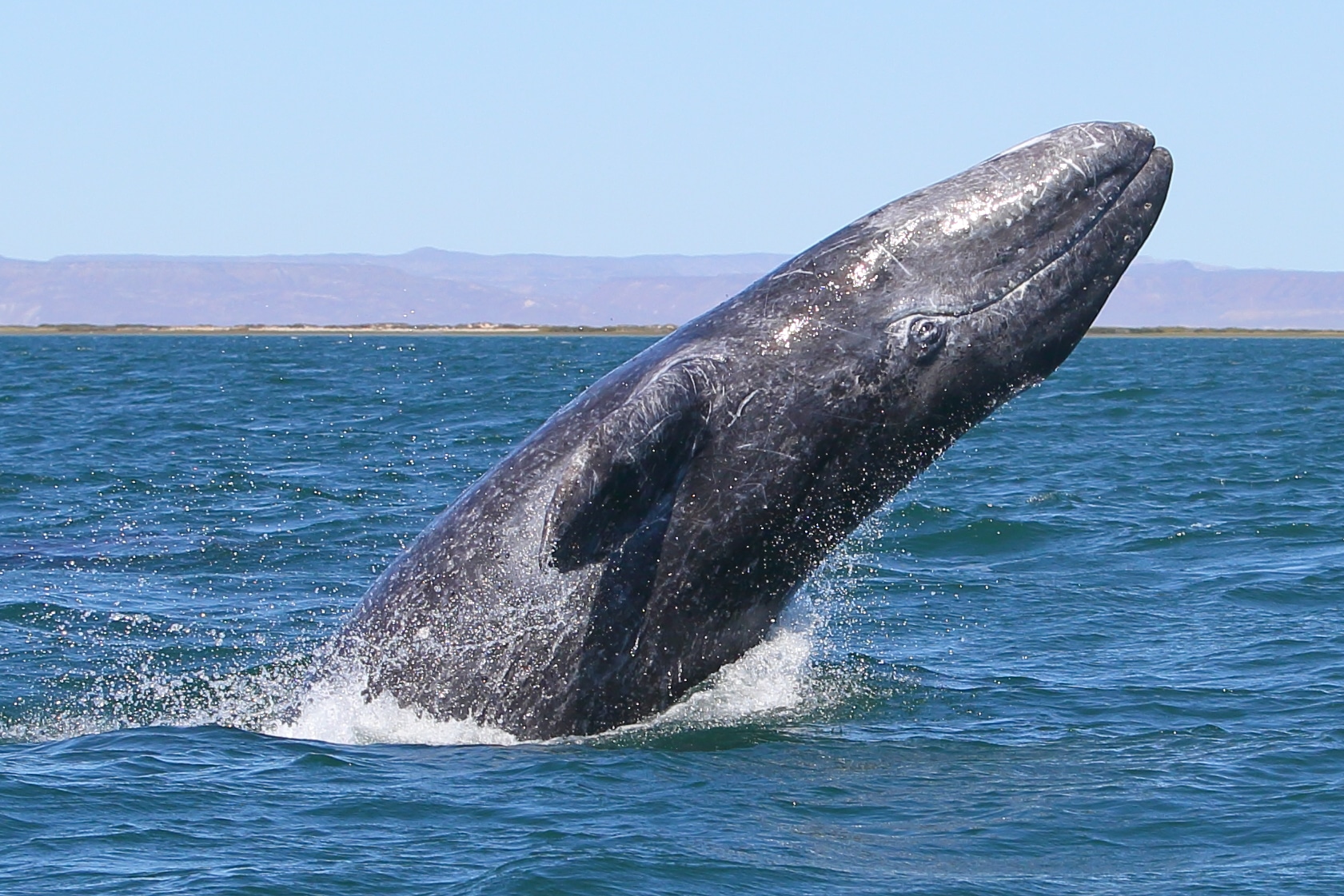An Introduction to Cetaceans

The Basics
As previously mentioned, cetaceans are an infraorder that includes whales, dolphins, and porpoises. They are mammals that inhabit nearly every part of our world's oceans! Most cetaceans are migratory, which means that they go from one place to another to feed or breed. A lot of species have kept the same migratory patterns for years! For example, gray whales are famous for their yearly migration to Baja California to give birth to their calves, which they have been doing for centuries. Nowadays, most people view whales as the big and beautiful guardians of the sea, and whale-watching has exploded in popularity. But, as we will explore later, this newfound connection between humans and whales has not always been so peaceful (on our part). Despite everything we have subjected whales to (in the name of industry), they have HARDLY shown aggression to humans IN THE WILD.
Early History
Did you know that whales closest living relatives are HIPPOS? Yes! Cetaceans started out as a four-legged mammal (like a lot of them do), and some way or another they slowly became aquatic. You can actually see some traces of their land-living past in certain species. Some cetaceans have a floating femur bone, which was once connected to the legs they used to have. There is actually a really interesting documentary on it by PBS, watch it here!
Dark Times: Whaling
Whaling has been around for centuries. Many ancient and native people in certain areas relied on whales for food or other materials. However, in North America and Europe, it had a sudden explosion in the 18th century. Many large species of whales were hunted nearly to extinction in pursuit of whale oil, bone, meat (for pet food), and ambergris. Ambergris is a waxy material harvested from sperm whales, and was used for things like perfume. Thousands of barrels of oil were brought in evrey day, all at the cost of millions of whales. Blue whales, gray whales, sperm whales, and more were killed on a massive, unsustainable level. Cetaceans have a long gestational time and many take the time to care for their calves. But during this time, they were being killed so frequently and so often that many populations declined steeply. While whaling filled the pockets of many men, it took the lives of many whales. Almost every single great whale species fell at the hands of the industry. Around the 19th century, whaling stopped. Not because people realized that it was wrong, but because there just weren't any more whales to harvest. So, a whaling commission was formed, and whaling became regulated. Some countries' native people are still allowed to harvest a few whales a year, because they rely on their meat to feed their people. However, Japan has a dolphin drive every year that captures dolphins for the sake of selling them into aquaria.
The Future of Cetaceans
It is sad to say, but a lot of whale species have never recovered their pre-whaling numbers. But, there are some success stories! Humpback whales, after a long time of recovery, have had a population growth and are entering relatively stable numbers! Most whales are protected species now, and people are actively working on finding ways to conserve them. Unfortunately, right now, gray whales are at their lowest population numbers since the 1970s. The same situation is becoming true for Atlantic right whales, who have been in a decline for a very long time. Without proper conservation, it is very possible that we may never see the population growth of certain whale species. Not only are some struggling to recover from the whaling era, but many are facing continous threats due to the current state of fishing and other industries. Our great whales are not the only ones who are suffering. Even though dolphins have a faster turnaround time compared to their larger cousins, many are not entirely free. A lot of dolphins are still captured worldwide to be little 'swimming buddies' in vacation spots, or they're forced to do tricks. River dolphins especially are in danger. Many of them have such small population numbers, and are in few stretches of a single river, that any human activity is harmful to them. It is even possible that one species, the Yangtze River Dolphin, has already been driven to extinction by human activity.
Even though they may not be as cute as otters or seals, cetaceans are still worthy of our conservation efforts. These beautiful animals have roamed the sea much longer than we have, and exihibit many of the same behaviors as us. Sperm whales and orcas have their own languages, and their babies 'babble' like toddlers often do. Gray whales are some of the most affectionate mothers in the Animal Kingdom, and are often seen cradling and showing affection to their calves. These animals, whose size and behavior have awed people for centuries, deserve to be around for centuries to come. Here are some organizations that you can donate to or be a part of:


